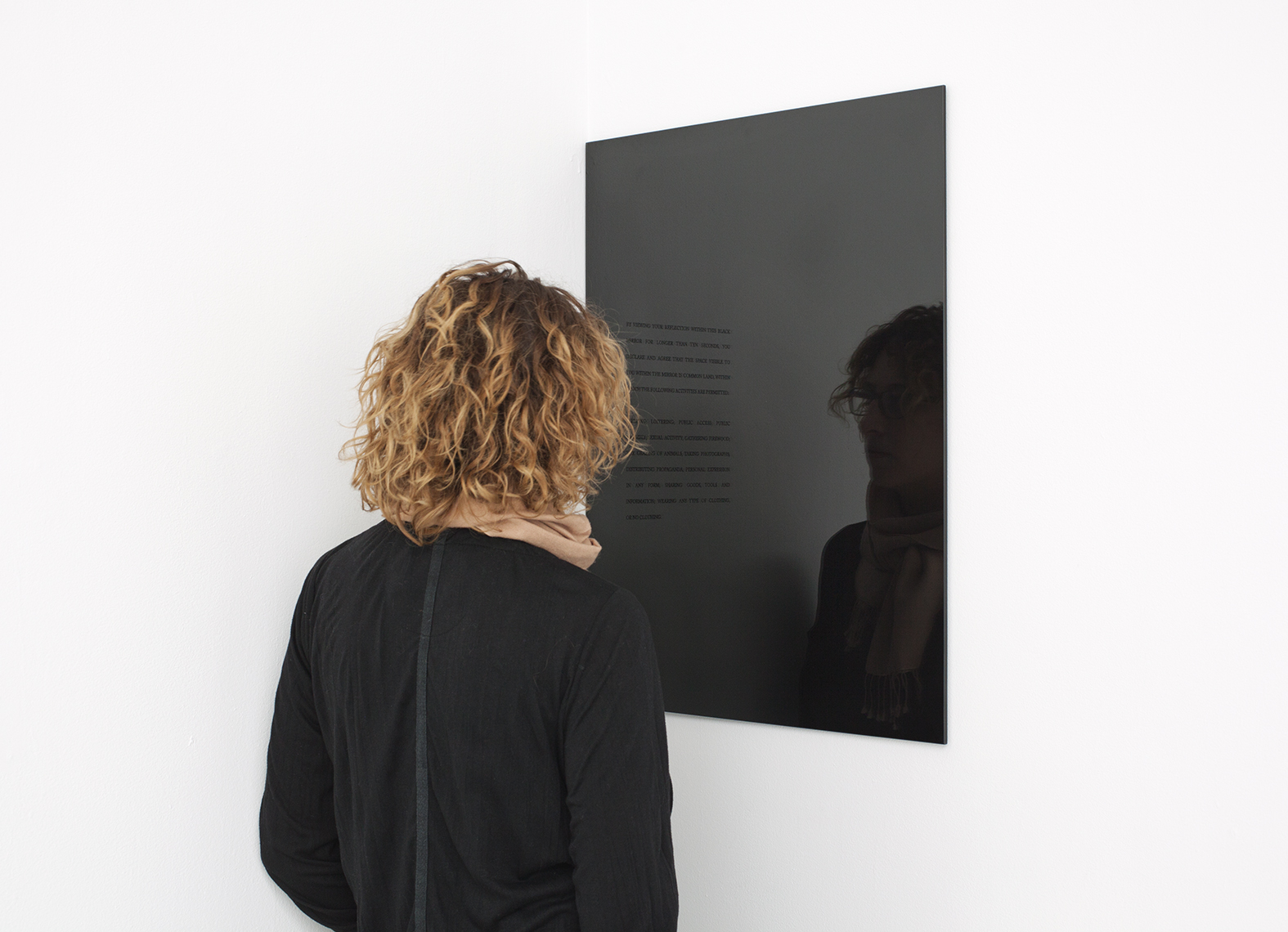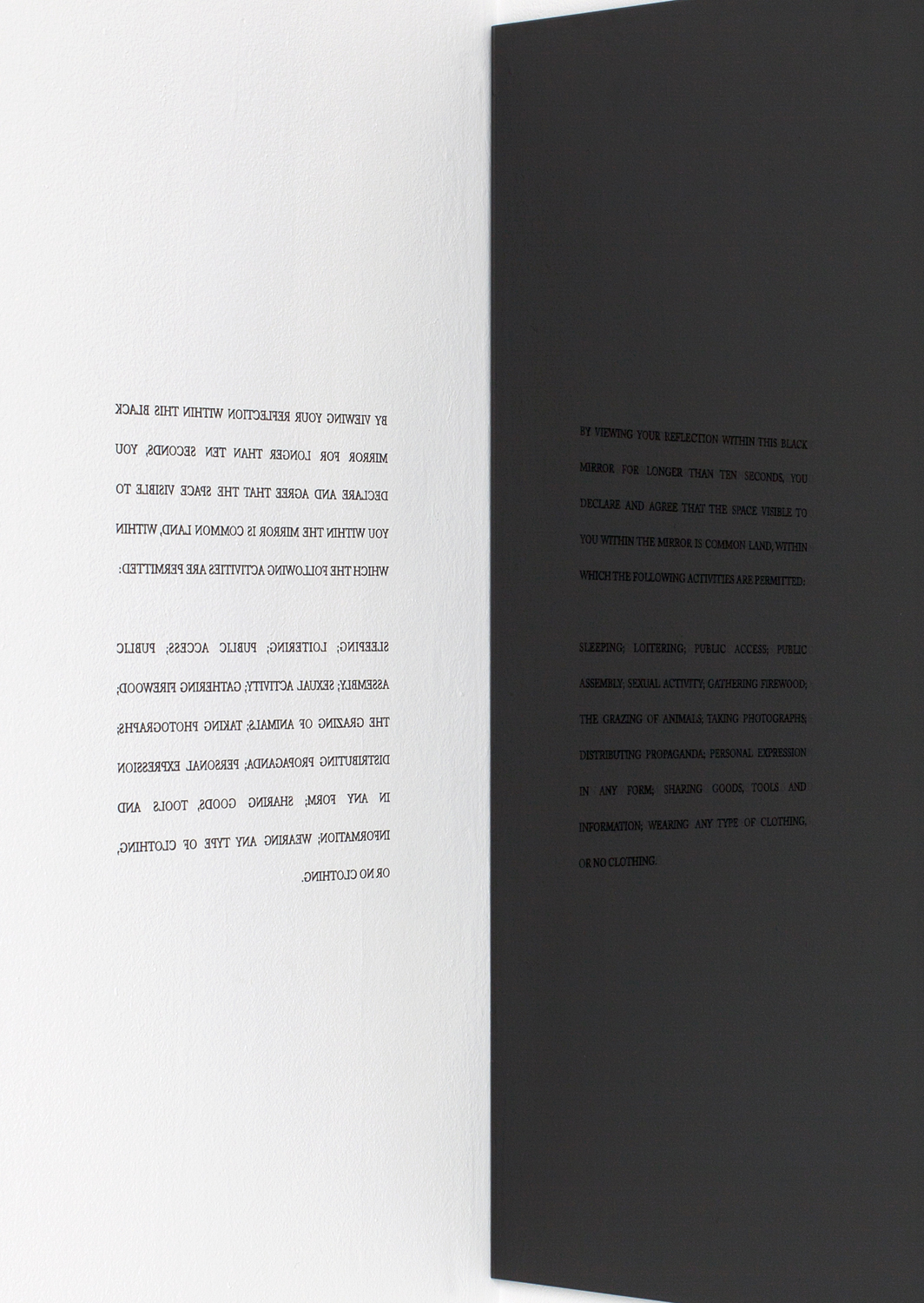Obsidian Contract
2010, vinyl text and black mirror
mirror: 69.9 x 54.6 cm; text: 24.8 x 19.1 cm
distance from text to wall: 7.5 cm
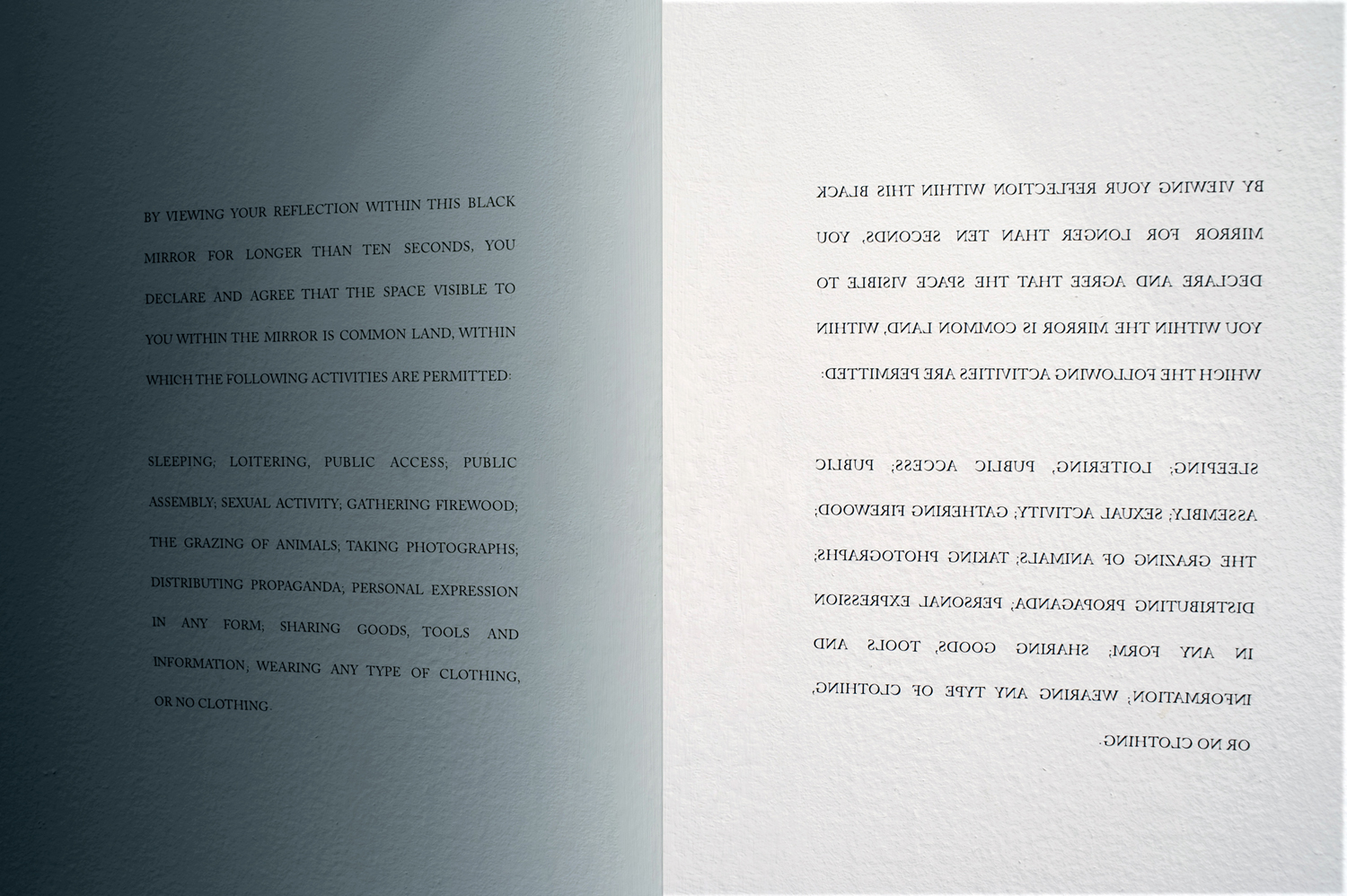
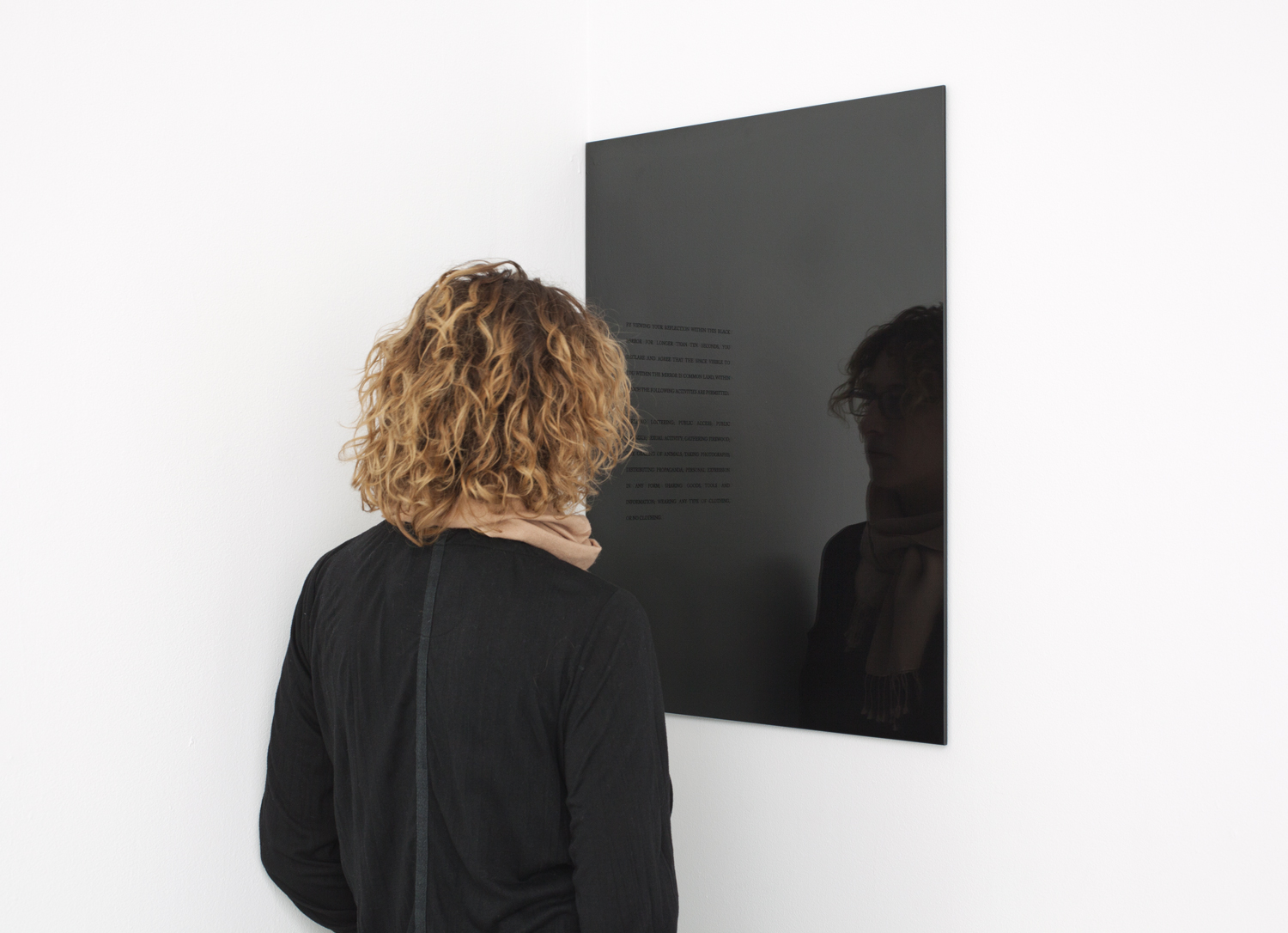
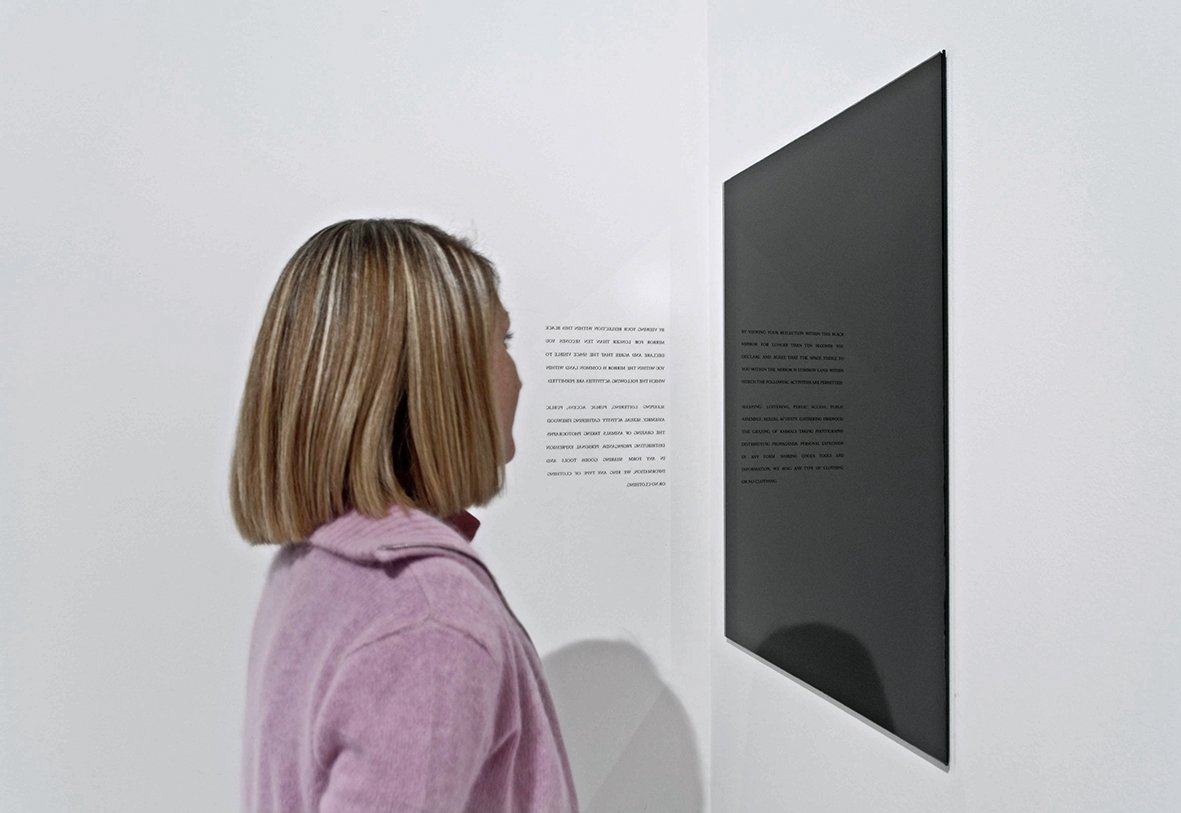
Obsidian Contract (2010) features a legal contract written backwards and reflected in a black mirror, a device which has a long tradition within witchcraft and the occult in many cultures, and which was also used by landscape painters in the Romantic era to imbue a scene with a dramatic tonality.
The contract, written to involve the viewer, proposes the exhibition space visible in the mirror as a new area of publicly-owned land, in which certain activities considered illegal in public space at different times, such as the grazing of animals or sexual activity, are made permissible.
